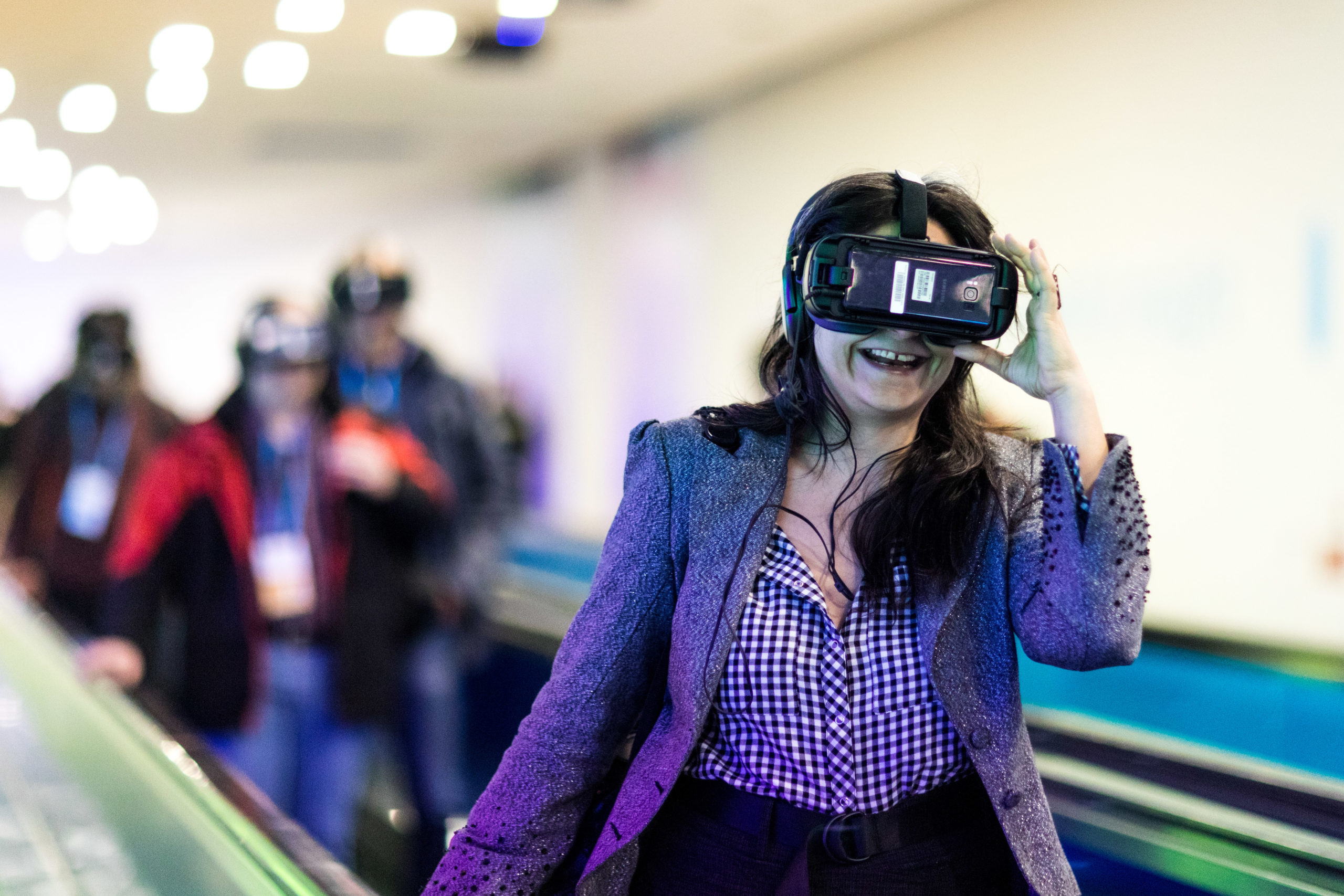How brands are combining technology with live experiences to create real-world connections with consumers.
The convergence of cloud, artificial intelligence (AI) and mixed reality is giving brands greater experiential opportunities, opening up more meaningful, relevant and immersive environments. Brands can personalise live experiences and events as well as create and scale these faster.
With the addition of the 5G rollout there’s also significant potential to capitalise on second-screen experiences – think connectivity between the real world and a layer on a smart device. At present at a sporting event, you can watch a game on a pitch, while your phone updates with information and stats about the action. Using 5G, you can start to unlock other services and experiences, overlay graphics on a real-life action, watch from different angles (including the players), and enjoy a fully augmented experience.
So, at George P. Johnson Experience Marketing, who work with some of the world’s technology leaders, such as Cisco, IBM and Google they devise brand experiences centred around technology. Nick Riggall, VP of emerging technologies at the agency, says that technologies such as cloud, AI and mixed reality are helping accelerate audience reach and are increasingly “malleable”, with “plug and play”, reusable options making the technology more cost-effective. The agency has also explored how to reduce friction through tech-first brand experiences.
“With events, we started using technology to make everyday services feel more natural – that could be anything from making ticketing and registrations mobile-centric to enabling second-screen experiences between mobile devices, all of which offers a richer experience,” he says.
Just doing it
For instance, the agency has worked with Nike on mobile-centric ticketing and mobile content, with the aim of engaging the sports brand’s retail partners, as well as using the technology within Nike stores.
“[We have] the ability to get tickets and access content to create push notifications – we use this to drive people to additional content, so it becomes more than just simple access to an event. There is a deeper level of interaction exactly where those audiences expect those touchpoints to be – going where the audience is rather than asking them to come to you,” explains Riggall.
While AI’s potential cannot be underestimated, there remains a large degree of uncertainty over the extent to which the technology can impact brand experiences. It could be some years before brands can fully harness its potential but Riggall believes this makes it all the more exciting, particularly when one considers the ability to test and prototype.
Riggall described a project that GPJ carried out on behalf of Cisco, for instance, which used visual recognition and AI to build a platform that logged individual facial expressions and features. Participants then had their images placed within a mural and raced against a computer to find themselves. GPJ has also deployed AI with the IBM Watson platform, featuring visual- and speech-recognition projects at Cannes Lions, Wimbledon and Mobile World Congress.
Building loyalty
For mobile and digital-first brands, brand experiences are set to become an important element of their marketing mix. The ease with which customers can sign up to these services and switch to a competitor presents an interesting challenge, one that is prompting mobile and digital-first brands to move beyond digital-only touchpoints and to invest in real world experiences that can attract and sustain customer attention.
These live experiences can help deliver against key marketing objectives such as shifting consumer perception, enabling these brands to foster real world connections with their communities and creating a rapport with audiences to drive loyalty and extend lifetime customer value.
Riggall believes that understanding the technology that underpins how these brands deliver mobile and digitally-led services and value to their user base is fundamental. You need to understand this to create consistent, familiar, connected experiences with a smart device commonly built into the heart of immersion.
“Much of this is baked into mobile operating systems – think augmented reality in the browser, messaging platforms and voice assistants,” he says. “Expect to see more brand experience strategies to bring communities together, to pilot and optimise new services with a trusting audience and to create immersive experiences.”

A tech-first approach to experiences can also lead to a richer return on investment. These are likely to deliver ‘softer’ but perhaps more meaningful measures over the long-term. Instead of lead generation or sign-ups or a sale, technology can be used to prompt a shift, a likelihood to advocate or influence a promoter score. Riggall believes that emotions too will become increasingly valuable, with brands able to elicit these and ‘capture’ them via tech-focused brand experiences.
“We must use technology to surprise, delight and change expectations – it’s a longer-term effect,” says Riggall. “Audiences in the real world are much more empathetic when you engage with them in a live environment – you can openly test and get feedback that is not anonymous or guarded.”
As Featured in Campaign Magazine
